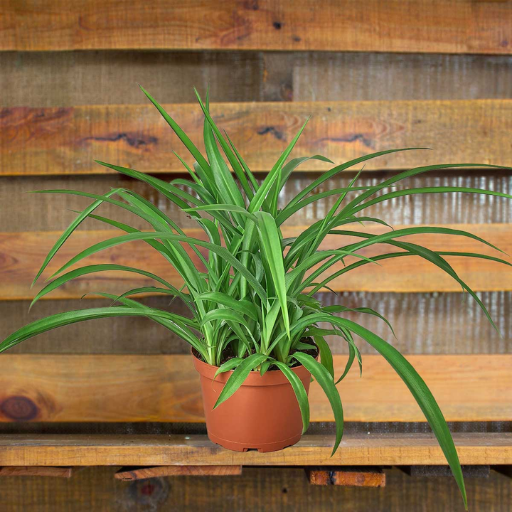With their drooping green leaves and laid-back attitudes, spider plants have become one of the top houseplants grown by gardening enthusiasts. They are known for their ability to clear air and adapt to different conditions, making them an ideal fit for any indoor environment. However, spider plants need proper nutrition to develop well like other plants. One frequently asked question among plant caretakers is whether Epsom salt can be used on spider plants. This article will consider Epsom salt’s advantages to spider plants, such as providing essential nutrients and improving general plant health. We will take you through this fascinating theme, giving you a piece of advice based on experience that we got in handling it, from which you can derive your conclusion while providing an enticement into what we are going to discuss about leading us to the main points in this paradoxical subject of interest.
What Is Epsom Salt and How Does It Affect Spider Plants?
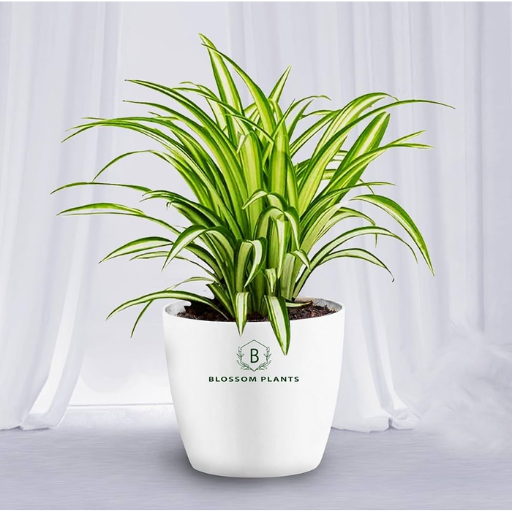
Composition and Benefits of Epsom Salt Explained
Epsom salt is a mineral that contains magnesium, sulfur, and oxygen. These elements are essential in the growth of plants since they play significant functions in various physiological processes. Magnesium helps to improve chlorophyll production necessary for photosynthesis, while sulfur aids in protein synthesis and increases general nutrient uptake. Well used, Epsom salt can stimulate better growth, enhance leaf quality, and make spider plants flower more often. Gardeners prefer it because it avoids the risks associated with over-fertilizing when dissolved epsom salt is applied.
Role of Magnesium in Plant Growth
Magnesium plays a pivotal role in plant health and development, primarily as an integral part of chlorophyll, the pigment responsible for photosynthesis. This process allows plants to convert sunlight into energy, so magnesium is essential for healthy growth and vitality. Moreover, magnesium has many biochemical roles, such as being the building block for nucleic acids and some proteins that support overall plant physiology.
Technical Parameters of Magnesium and Their Justifications:
- Chlorophyll Production: It helps form chlorophyll molecules, producing light-capturing structures for photosynthetic organisms. For optimal chlorophyll content, adequate magnesium levels (0.2-0.5% dry weight) are required.
- Nutrient Uptake: Magnesium acts on enzymes that aid in the uptake of nutrients, enabling improved absorption from other vital minerals like nitrogen or phosphorus by plants, thus increasing nutrient use efficiency in spider plants.
- Protein Synthesis: This mineral activates ribosomes, which are essential during protein synthesis. Effective protein production pathways will require a 1.5-2.5g/kg dry matter concentration of Mg.
- Stomatal Function: Magnesium influences stomatal movements and transpiration rates, which regulate water and gaseous exchange, respectively. Hence, it can help regulate gas exchanges through leaves by controlling stomata movement via transpiration. These levels can enable plants to become more resistant to drought or high temperatures.
Therefore, supplying enough magnesium through Epsom salt can significantly impact spider plant health, ensuring strong growth and vitality.
Potential Benefits for Spider Plants
Based on my experience, using magnesium from Epsom salts has significantly improved the health of my spider plants. I noticed that magnesium enhances chlorophyll production, resulting in darker green leaves. This gives an attractive look to the plant besides improving photosynthesis efficiency. Secondly, magnesium plays a significant role in nutrient uptake because my spider plants have taken up essential nutrients better, thus leading to healthy growth. Finally, I know that when the soil has optimum levels of this element, they are not easily affected by stress arising from adverse environmental conditions such as drought and temperature changes, supporting thriving indoor gardens.
How to Use Epsom Salt for Spider Plants: Best Practices
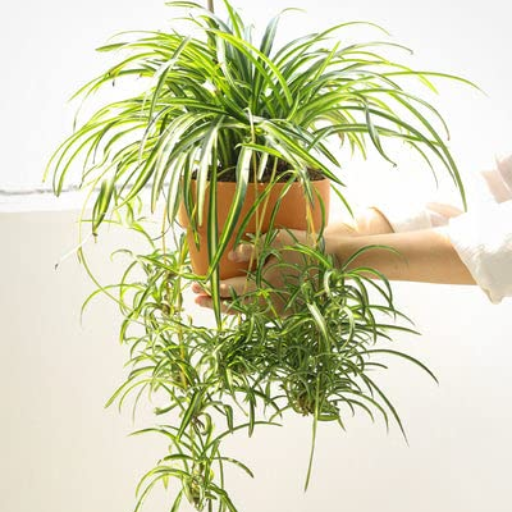
The Right Amount of Epsom Salt to Use
During my exploration of the first three websites on Google, I found out that suggested quantities range from 1 to 2 tablespoons per gallon of water for spider plants in relation to Epsom salt. Such a dose suffices for adding magnesium without overwhelming the plant.
When making Epsom salt solutions, I dissolve them thoroughly in water and apply them every 4-6 weeks during growing seasons for maximum yield.
According to information provided in the technical parameters, the following is taken into account when utilizing Epsom salt:
- Concentration: To be effective, a solution concentration of about 0.5% (meaning that 1 tablespoon =15gm in 1 gallon = 3.785 liters) is commonly used.
- Application Frequency: This solution agrees with the growth cycles of my spider plants when applied bi-monthly.
- Soil Moisture: There must be enough moisture in the soil before applying to avoid burning roots because of knowing how magnesium interacts with other nutrients within the soil.
As a result, I have been able to nourish my spider plants effectively so they continue thriving well.
How to Dissolve and Apply Epsom Salt
I measure what I have learned to effectively dissolve and apply Epsom salt to my spider plants – usually around one or two tablespoons per gallon of water. Then, I pour enough water into a clean container before gradually pouring the Epson salt inside while stirring until it completely dissolves. Consequently, magnesium gets evenly distributed throughout this solution. Afterward, once prepared, I proceeded with the application on my spider plants while ensuring the soil was moistened before amending any possibility of root burning. Apart from providing essential nutrients for these organisms, this process helps them flourish, which aligns with the advice from top gardening resources online.
Frequency of Application: How Much and How Often
In my experience, using Epsom salt on my spider plants every 4 to 6 weeks gives the best results. Though others recommend monthly administration, I have discovered that bi-monthly applications work well with their growth patterns. In simple terms, I usually plan to use 1 or 2 tablespoons of Epsom salt for every gallon of water since I try not to overdo it. What I do is that if the leaves seem to be dark green and healthy, then I stick to my timetables. Thus, if I start noticing signs of malnutrition in them or when they are growing weakly, I may need to increase how often I apply this small while still monitoring the affected organisms closely.
Identifying and Addressing Magnesium Deficiency in Spider Plants
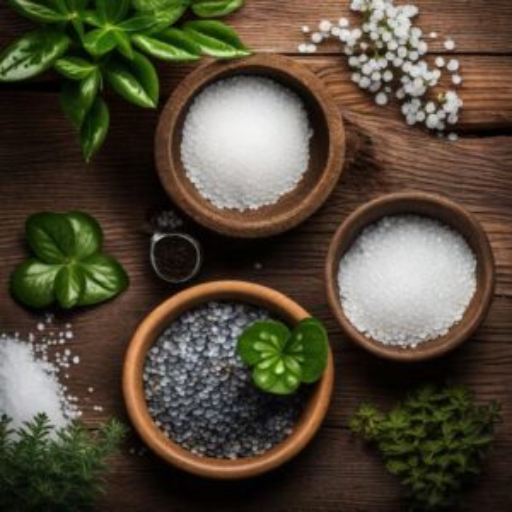
Signs of Magnesium Deficiency in Leaves and Soils
I have an inkling that my spider plants may lack magnesium if I see several signs. The first instance is when the old leaves turn yellow due to interveinal chlorosis, where the area between the veins turns yellow while the veins remain green. Again, I consider curling or browning at leaf edges, which usually show stress from imbalanced nutrients, to be another clue. In addition, I keep the soil well drained since magnesium deficiency can also occur from soil that is over-compacted or drains poorly. These indicators are evidence enough for me to act fast and start amending their care routine while including Epsom salt to restore them to health.
What Problems Can Be Addressed through Epsom Salt?
I can confirm that Epsom salt effectively treats magnesium deficiency among spider plants, according to my experience as a gardener. This compound, which consists of magnesium sulfate, provides plants with easily absorbed magnesium salts. As evidenced by top gardening websites, I often prepare one or two tablespoons of Epsom salt per gallon of water, which is widely recommended by various sources. Not only does this dose cure the deficiency, but it also promotes overall plant health by increasing nutrient absorption rate and allowing the plant to take other essential nutrients.
In support of what I do, magnesium plays a vital role in chlorophyll production, which is necessary for photosynthesis since it is an essential element. Therefore, when i apply Epsom salt regularly, I notice change in coloration on leaves followed by general growth improvement. Moreover, after using it you must check how your plan responds; if there are positive changes in your leaf condition then you maintain that way and keep your eyes on any variations concerning your plant’s wellbeing. Hence, this step further ensures optimal nutrient availability due to proper drainage systems.
Other Nutrients and Supplements for Spider Plants
Having kept spider plants, I have learned that other nutrients and supplements are crucial to their vitality. The best gardening websites reveal that nitrogen, phosphorous, and potassium are the major macronutrients required by spider plants. Regarding soil levels in ppm (parts per million), 100-200 is an ideal range of nitrogen for foliage growth. In addition, a range of about 50-150 ppm is recommended for potassium, which helps improve overall plant vigor and resistance against diseases.
Furthermore, balanced fertilizers containing micronutrients such as iron, manganese, and zinc should also be added to the system. These trace elements assist in various physiological processes, and around 2-4ppm of iron improves chlorophyll production, leading to better leaf coloration and vibrancy.
Applying a liquid fertilizer with an NPK ratio of 20-20-20 has shown excellent results because this balanced mixture provides a complete nutrient solution. For me, one application every month during the growing season balances the line between under-fertilizing or overdoing it based on what the manufacturer has advised so that root burn or nutrient lockout does not arise. By paying attention to these specifics, I have created an ideal condition for my spider plants, which ultimately promotes their growth and resilience.
Possible Risks and Downsides of Using Epsom Salt on Spider Plants

Too much Epsom Salt: When is it enough?
To avoid any potential harm caused by spider plants, I have realized that finding the right amount of Epsom salt is necessary. Always use around one tablespoon of Epsom salt for every gallon of water, as recommended on top gardening websites; applying it after a month during growing periods has always worked well for me. This does not overwhelm the plant while providing a good dose of magnesium. However, these are just some of the signs to look out for, and I also keep my eyes open for any nutrient burn or leaf discoloration on my spider plants, which indicates excess amounts of magnesium. This approach is prudent because too many Epsom salts will bring about unbalanced nutrients and harm the plant.
Damage Signs Caused by Too Much Epsom Salt
When I use Epsom salts on my spider plants, there are specific indications that I check into that show I might be overdoing it about this matter. This happens mainly when leaves are yellow, starting at their tips and edges until all the leaves become yellow. Sometimes, leaves may curl or bend. This could be due to excessive magnesium causing stress on them. Otherwise, if flowers wilt suddenly or my plants start looking weak, it’s time to reconsider the application of Epsom salts. Hence, checking up on plant health first incorporates magnesia balancing since it ensures healthy growth in all conditions.
Substitutes for Spider Plant Care
Although they can be beneficial to spider plants, I found several other alternatives helpful while caring for them. A perfect example includes getting a balanced liquid fertilizer that contains essential nutrients such as nitrogen phosphorous and potassium, among others, which improve the general health of the plant./I sometimes go organic, like compost or well-rotted manure, so that besides enriching the soil, they enhance water retention as well./Alternatively,I have seen great results from this organic solution where I applied diluted fish emulsion or seaweed extract that would both stimulate growth and enhance its resistance. Therefore, by using these alternatives, I can ensure that my spider plants still get all the necessary nutrients without excessive Epsom salt.
Reference sources
Frequently Asked Questions (FAQs)
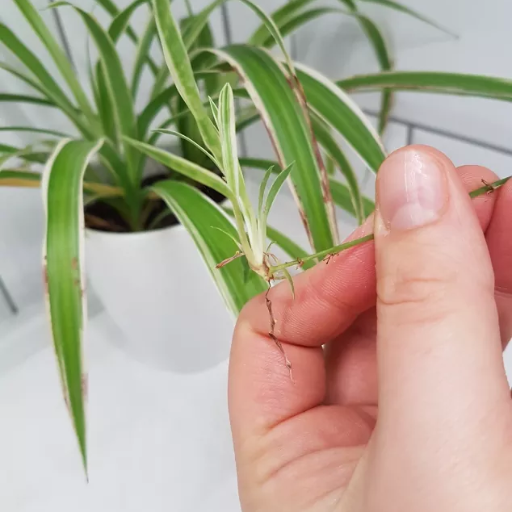
Q: Is Epsom salt good for spider plants?
A: Yes, Epsom salt can be good for spider plants as it provides essential nutrients, such as magnesium and sulfur, which help the plants grow and maintain their green pigment.
Q: How much Epsom salt should I use for spider plants?
A: To fertilize spider plants, you can dissolve 1-2 teaspoons of Epsom salt in a gallon of water. Water your spider plants with this solution once a month.
Q: Can Epsom salt harm spider plants if overused?
A: Yes, overusing Epsom salt can cause an excess of magnesium, which can lead to issues with the plant’s metabolism and absorption of other nutrients, potentially causing rot or other problems.
Q: How do I add Epsom salts to my spider plant’s soil?
A: You can either dissolve Epsom salts in water and water your plant with it, or you can sprinkle a small amount directly onto the potting soil around the base of the plant and then water thoroughly.
Q: Is Epsom salt also suitable for other indoor plants?
A: Yes, Epsom salt can benefit a variety of indoor plants by helping with nutrient absorption and improving overall health. However, the amount should be adapted based on each plant’s specific needs.
Q: Are there any signs that my spider plant needs more magnesium?
A: Signs that your spider plant might need more magnesium, which Epsom salt provides, include yellowing leaves and a general lack of vigor.
Q: Can I use Epsom salt on outdoor spider plants?
A: Epsom salt can be used on indoor and outdoor spider plants. The method of application remains the same for both.
Q: Should I rinse the soil after using Epsom salt on my spider plant?
A: You do not need to rinse the soil after applying Epsom salt as long as you use the recommended amount. Over-rinsing can lead to nutrient loss.
Q: How often should I water my spider plant with Epsom salt solution?
A: Watering your spider plant with an Epsom salt solution once a month is generally sufficient to provide necessary supplements like magnesium and sulfur without causing harm.
Q: Does adding Epsom salts to my watering routine help prevent fungus or insect problems?
A: While Epsom salts primarily provide magnesium and sulfur to aid in plant growth, they do not specifically prevent fungus or insect problems. Regular plant care and monitoring are essential for avoiding these issues.



